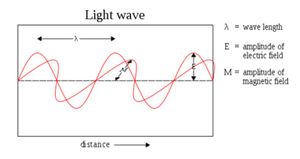Analytical Prediction: Difference between revisions
| Line 11: | Line 11: | ||
Unlike the iterative prediction method which is derived directly from the momentum principle, the formula for analytical prediction is based of the formula for the arithmetic mean. | Unlike the iterative prediction method which is derived directly from the momentum principle, the formula for analytical prediction is based of the formula for the arithmetic mean. | ||
[[File: 1.jpg| | |||
[[File: 1.jpg|300px|thumb|left| Where x bar is the average, sigma f x is the sum of all the of the numbers, and sigma f is the total number of terms]] | |||
Since we only need two values of velocity to calculate the average velocity, the formula, for this purpose, can be simplified. | Since we only need two values of velocity to calculate the average velocity, the formula, for this purpose, can be simplified. | ||
Revision as of 12:22, 3 December 2015
By Hayden McLeod (hmcleod6)
Short Description of Topic
The Main Idea
Analytical prediction uses a mathematical function that can describe the position or velocity of a system at any given time. In contrast to iterative prediction, this means that there is no need to make multiple calculations at small steps in order to find a solution. However, due to the method of derivation of the velocity, the analytical method is only accurate to a high degree when the force applied to the system is constant. Due to this limitation, the iterative prediction method is much more generally applicable.
A Mathematical Model
Unlike the iterative prediction method which is derived directly from the momentum principle, the formula for analytical prediction is based of the formula for the arithmetic mean.

Since we only need two values of velocity to calculate the average velocity, the formula, for this purpose, can be simplified.
Insert formula here
A Computational Model
How do we visualize or predict using this topic. Consider embedding some vpython code here Teach hands-on with GlowScript
Examples
Be sure to show all steps in your solution and include diagrams whenever possible
Simple
Middling
Difficult
Connectedness
- How is this topic connected to something that you are interested in?
- How is it connected to your major?
- Is there an interesting industrial application?
History
Put this idea in historical context. Give the reader the Who, What, When, Where, and Why.
See also
Are there related topics or categories in this wiki resource for the curious reader to explore? How does this topic fit into that context?
Further reading
Books, Articles or other print media on this topic
External links
References
This section contains the the references you used while writing this page